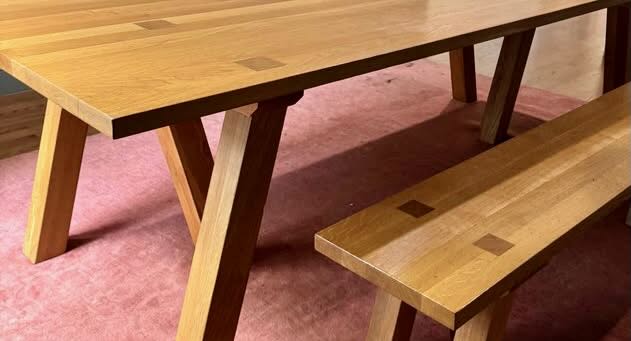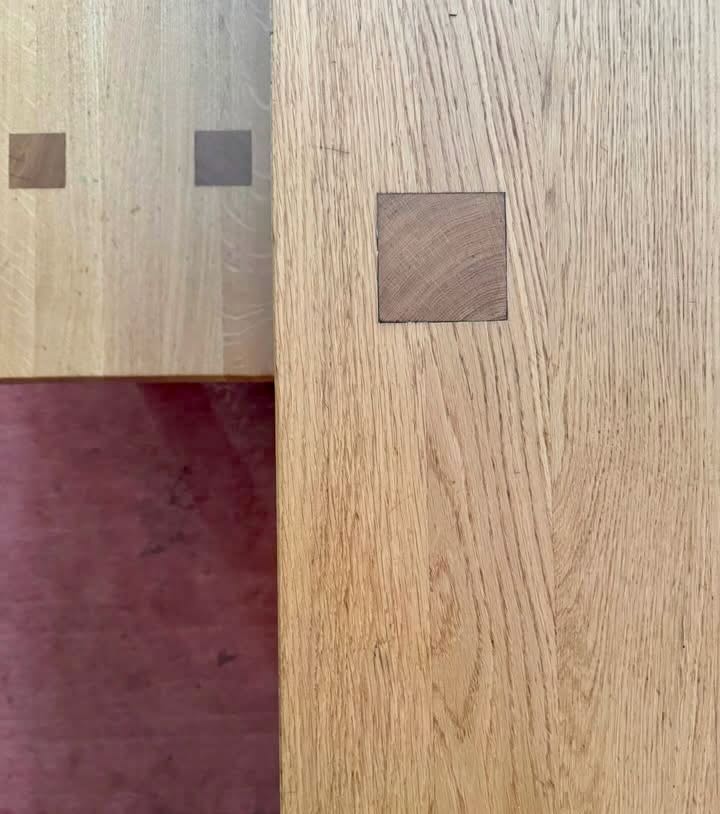A Table Is Immortal

“At the table, where food and stories are passed from one person to another and one generation to another, is where each of us learns who we are, where we come from, what we can be, to whom we belong, and to what we are called.” — Leonard Sweet, From Tablet to Table: Where Community Is Found and Identity Is Formed
Last week, we signed the lease for Tillage. Tillage has a home at 1410 Irving Street!
Leading up to the lease signing, there’s been a flurry of activity: launching our updated website, releasing limited membership pre-sales, hiring new team members, and a million decisions and to dos that pile up and pile up.
But, before any of that happened, we had already purchased Tillage’s first piece of furniture… a table. A big ol’ farm-style dining table that I bought from a guy on Facebook Marketplace.
We needed a table, yes. But being both our first piece of furniture and being used were both important and intentional details. Let’s unpack them both.
Yes, a table is functional, serving as a utility for people to gather around daily to eat. We need to eat!
But what is that eating a symbolic reminder of? Whenever we gather, we remind ourselves and each other of our own limitations. We need to eat!
And also, the concept and structure of a table implies a gathering. Whether two or 10, a table is designed, purpose-built to be relational. So a table is also an invitation. An invitation that can be withheld or rejected, yes, but an invitation nonetheless to enter into community with the others who have gathered with you. We need to eat!
A table is also imperfect. I built our family dining table. It was the first large piece of furniture I ever built, and while it’s not Michael Scott level imperfect, it is very, very imperfect. And yet, it’s perfect. What do I mean by that?
As humanity slouches ever onward toward a future filled with perfect AI slop, our humanity will (and already is) craving imperfection. Why? Because imperfection is inherently human. Imperfection is resilience and endurance on display. Imperfection is better than perfection.
This is why our table for Tillage had to be used. The scuffs and dings and divots are proof that humans gathered there to remind each other of their own limitations and their own need for each other. They needed to eat.
The scuffs and dings and divots are memories, deposited into the table like an organic harddrive. As the seller of the table and I were casually chatting while my kids struggled to load the 4-ton solid oak table into the truck, I asked him why he was selling the table. He said that his family was moving overseas and out of all the furniture in his house, this table was the only thing he was sad to sell. "We fly out tomorrow," he said.
I replied, “It sounds like you made some memories around this table.” He smiled at me and then looked off into the distance and was quiet for a long time. I think he forgot about me. He seemed no longer to be in time with me. He was, I think, remembering, sifting through the many memories he had deposited into that table over the years.
Apart from this table, his house was empty and it seemed to me that he had been holding on to this table—these memories—until the last possible moment.
I could write for many days on the phenomenon of transactive memory—how we deposit memories into people and places (like that organic harddrive) and then come back later to retrieve them.
This guy was collecting memories before it was too late. And as I drove away with this table, with his memories, I could feel the weight. Yeah, obviously it's a heavy-ass table as my kids can attest to, but the metaphysical weight of this table could bend time and I felt the responsibility to steward this guy’s memories well by adding our own.
As we gather daily to remind ourselves of our own limitations and need for each other in community, we build a critical ritual of health — physical, emotional, spiritual — that connects us to the many members who sat at this table before us and the many members who will continue to gather long after us.
A table, therefore, is immortal.
Join us at the Tillage Table to remind yourself that you are built for connection.



